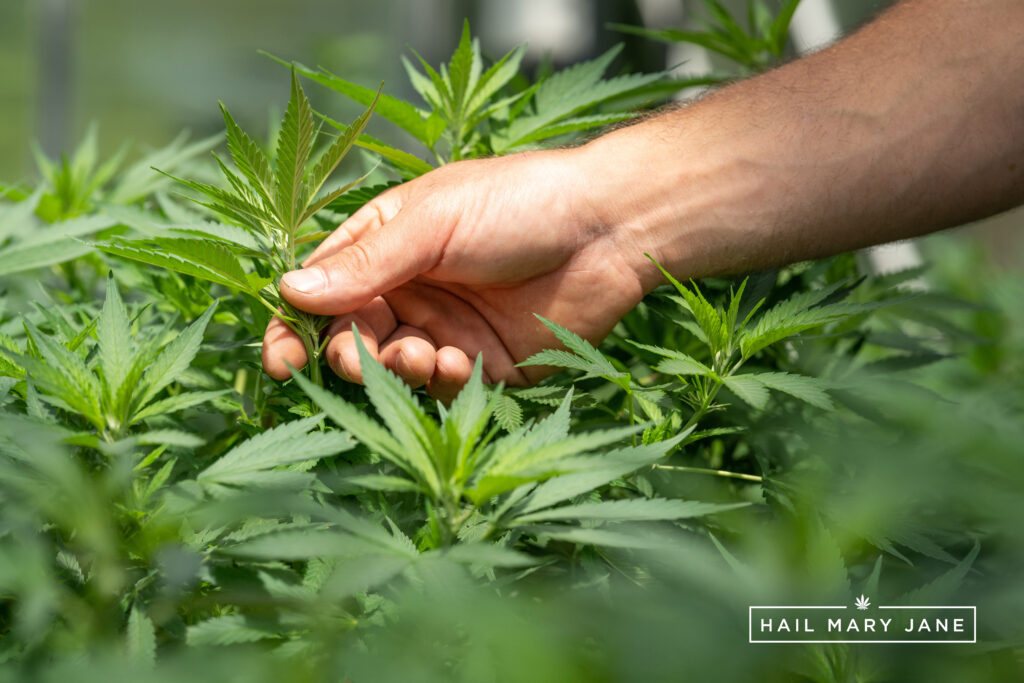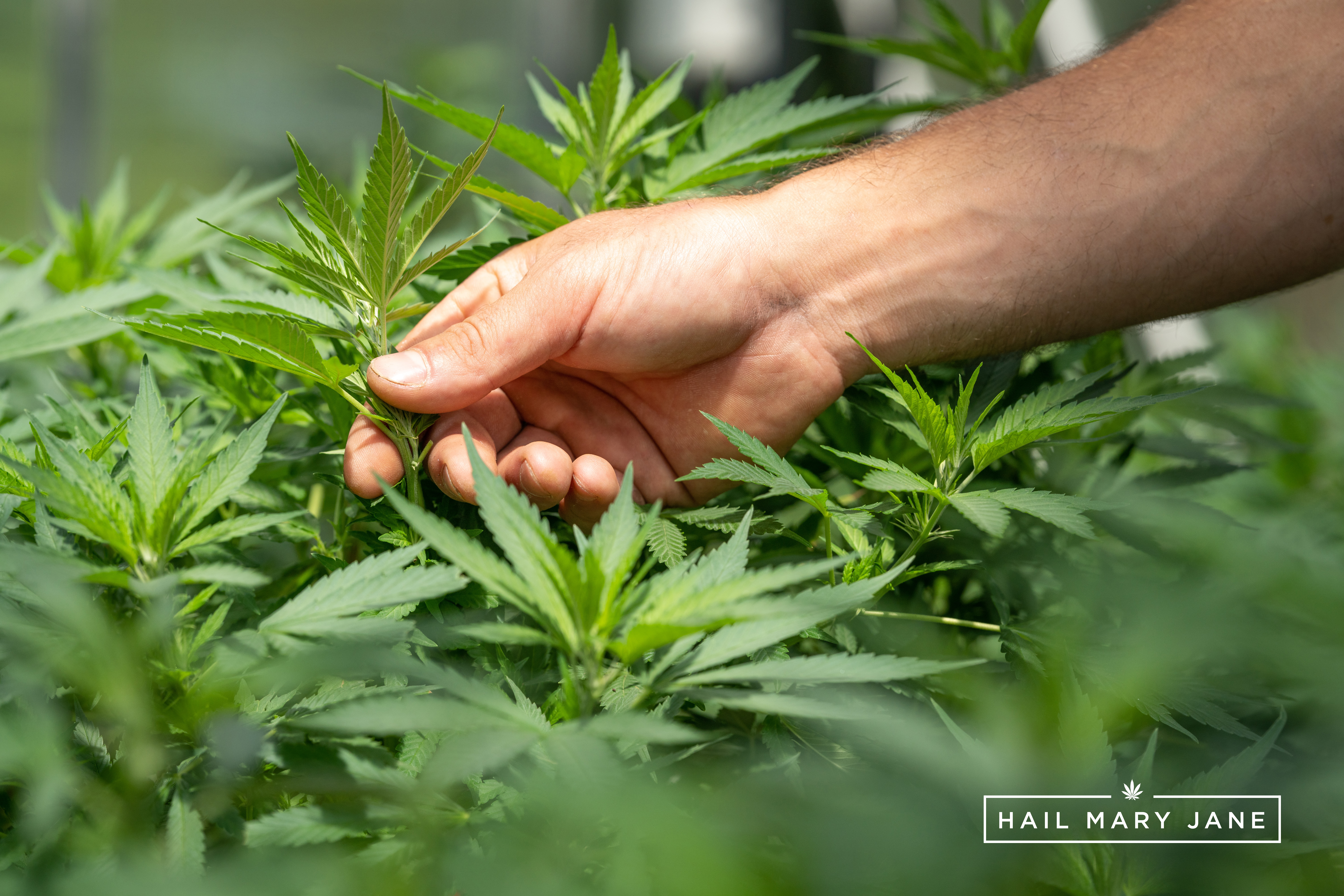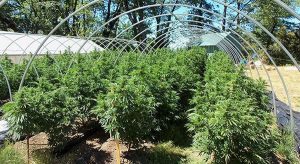Ever wonder what the key to the best tasting and most potent cannabis is? Well, we have the answer and the tips to make sure you create quality weed.
Drying and curing cannabis is a vital process in creating a quality experience when smoking. Both are essential but are not the same. When doing both correctly, you will preserve the terpene and cannabinoids while also reducing the chlorophyll with the plant. And as a result, you will have quality cannabis. This process might sound easy, but it is not. If done poorly, your weed can become low potency, lousy tasting, and dry.
Read more below to get the full rundown of drying and curing cannabis and how to do it right.
Table of Contents

So Why and How Exactly Do We Dry Cannabis?
Drying cannabis is the first step after harvesting cannabis. Drying is done to remove moisture from the outer parts of the flower. There are two methods to trim the flower after harvesting. Wet trimming is one, and dry trimming is the other.
When wet trimming, you want to trim the buds while they are still wet, and then after cutting them, dry the bud. And with dry trimming, you dry the plant and then go ahead and trim the bud.
The conditions for both processes should be the same, which is in a 60 degree Fahrenheit in a dark room with between 55 and 60 percent humidity. Not sure how to figure out how humid your room is? Use a hygrometer.
A small fan is also essential in the process because you will want the airflow to be moving in the room as well. This is done to ensure that there is no direct airflow on the cannabis itself. You do not want the marijuana to dry out quickly. And although the conditions are the same for wet or dry trimming, the timeframe to dry them will be different.
Some people also choose to use air conditioning units and dehumidifiers during their drying processes. These have been found to help with climate control. But every space is different so use what is going to be best for you and your bud.
How Do You Dry Cannabis with The Wet Trimming Method?
Using a flat drying rack, dry your buds. You can buy drying racks specifically for cannabis buds, and these will help create the perfect airflow needed.
Since you already cut the buds while they were wet, the drying process will be much faster in two to three days. Then, all you need to do is lightly touch them each day to feel how dry they have become.
What Is The Dry Trimming Method for Drying Marijuana?
Since you will be trimming your marijuana after you dry them, the branches will need to be hung upside down on a drying line. Having space between the branches will be vital in creating the correct airflow for drying.
Since you have to wait for them to dry before cutting, it usually takes seven to 10 days for them to dry. You do not want to rush the process by using heat and low humidity because your cannabis will lack the quality you desire. You will know that it is time to trim when the stem feels as though it could snap and the flower feels dry.
You do not want to rush the drying process in either method because the outside may feel dry but the inside could still very much be wet. But also do not take too long because you do not want your buds to start to have mold.
Now that we have gone over the drying process, let’s move on to curing cannabis…
How Do You Cure Cannabis?
In order to do the curing process, you must have airtight jars, such as glass mason jars and a hygrometer for each. You can also choose to use a metal or wood option for a container as well.
Please note that you do not want to use plastic containers because they allow oxygen to enter.
You want to loosely fill each container three-quarters full with your trimmed and dry cannabis buds. Also, make sure that your hygrometer is inside the container as well. You will want to tightly close and store your containers in a dark, cool and dry room.
It is important to note that basements and attic spaces are not usually ideal places to cure weed. This is because attics can be humid and a lot of basements can be moist. You want to choose a space that has a stable environment so that it is easier to make adjustments to your curing process.
Using the hygrometers that are in your containers, check the moisture the day after. The humidity inside the containers should stay between 55 and 65 percent. The hygrometers help you to create an environment that is controlled enough to rehydrate the outside of the bud without making a mold.
If the humidity gets too high, you can fix this by taking off the lid for up to a full day, and then after you have done that, go ahead and reseal them. If things get too dry, you can use a humidity pack to add back moisture to your marijuana.
What Is Burping?
It is important to remember to take your lids off once or twice a day every day for a couple of minutes during the first week. Do this even if things are looking perfect. By doing so, you are doing a process called burping, which allows for oxygen to enter your container and moisture to leave. This is essential to cure your cannabis correctly.
Once you get past the first week, you can burp your cannabis once every couple of days. However, make sure to watch out for the smell of ammonia over the next few weeks. This smell lets you know that your cannabis is creating anaerobic bacteria due to it being too wet.
The scent can occur even when your humidity levels are showing perfect with your hygrometer. If you start to smell ammonia when taking the container’s lid off, leave it off for one whole day before covering it tightly again.
How Long Does It Take To Cure?
Curing is definitely a long process but deciding how long to cure is your choice. Some people will cure their cannabis for four weeks, and others will choose two weeks. Anywhere in between will create quality marijuana. But some choose to wait even longer and cure their cannabis for four to eight weeks. So play around with it and find what works best for you! Definitely take your time, have patience and enjoy the process.
Why Is Curing Weed Important?
You may be wondering why the curing process is so important. The reason is that it directly affects the quality of your marijuana because the moisture inside is still coming out towards the outside of the bud.
In order to have a nice flavor and scent, the terpenes must stay at a certain temperature. A slower cure at a low temperature will protect those terpenes and hold their flavor much better than rushing the process.
In addition to this, by doing the curing process properly, you will be able to store your cannabis much longer without having to worry about it losing its potency, mold accumulating or degrading terpenes or cannabinoids.
Storing and Labeling Your Cannabis
Lastly, you’ll want to be sure that you are storing your cannabis correctly. If you are growing for personal use and don’t plan to send your cannabis off to a dispensary for sale then you will want to keep In mind a couple of things.
In order to continue to have quality cannabis, you will want to store it in a dark and cool place in tightly sealed containers. Dark because ultraviolet rays can create heat that will dry out or humidify your flower, which in return will create a not as smooth smoke. And cool because once again, you do not want any heat to be drying out your terpenes. If stored correctly, you will be able to keep it for nearly two years.
Another tip would be to label your cannabis after drying and curing so that you remember when you finished the process. Then invest in a hygrometer for storing to prevent potential mold.
Shopping List
We went over a lot of information in one article so we figured you might appreciate having all the supplies in one place. Below are the minimal supplies you will need to get your drying and curing process going:
- Hygrometers
- Small Fan
- Drying Racks for wet trimming
- Drying Line for dry trimming
- Glass mason jars or other tight containers that is NOT plastic. Metal and wood are other good options.
- Humidity Packs
- Labels
Let us know in the comments if you have any questions or comments regarding curing cannabis. We would love to hear about your experiences with these methods as well and hope you found our guide to be helpful.




